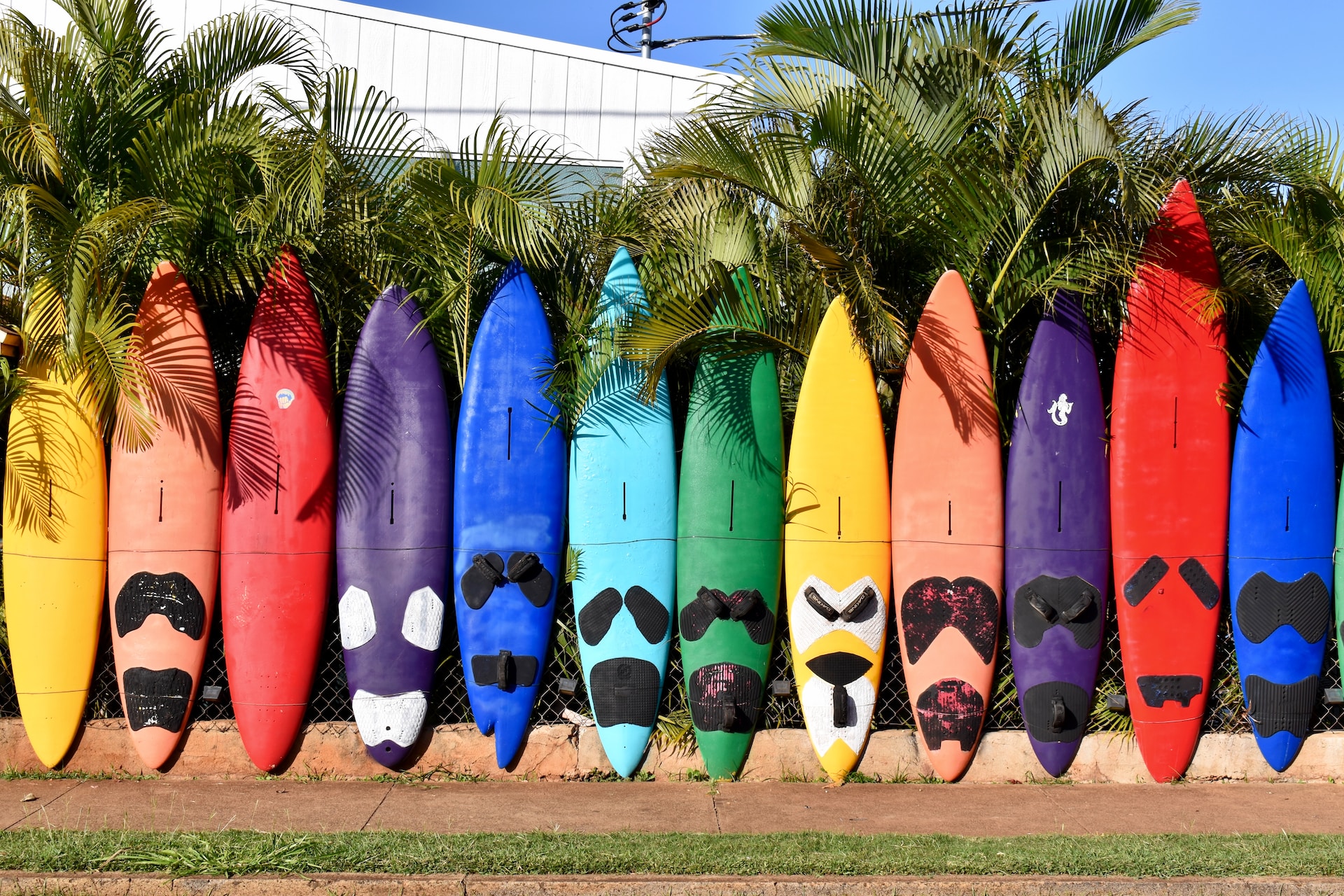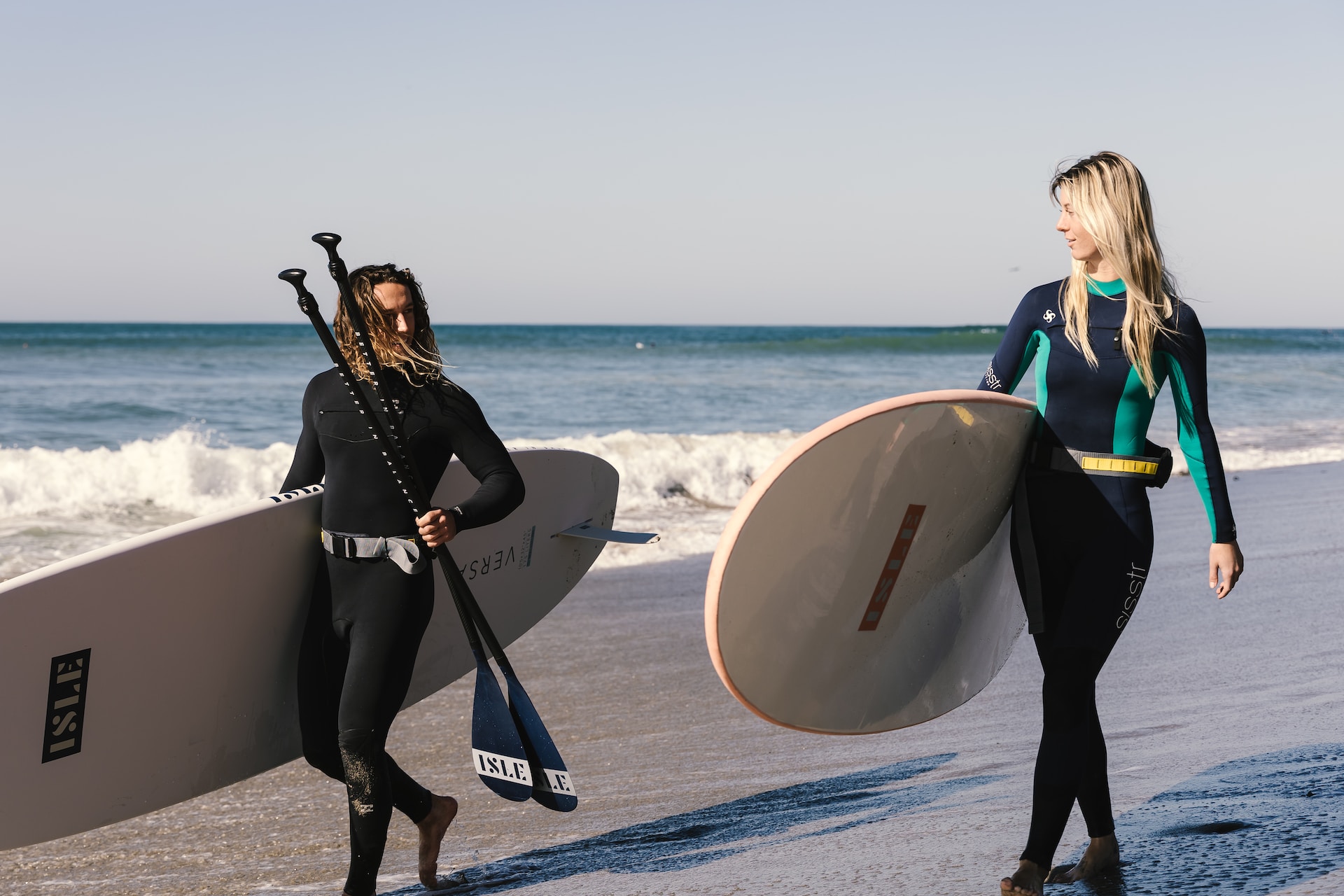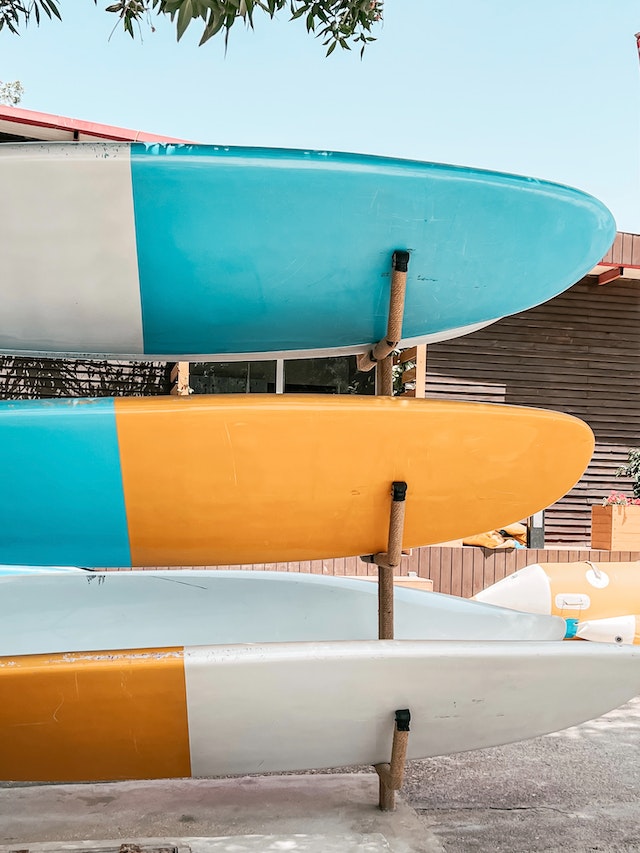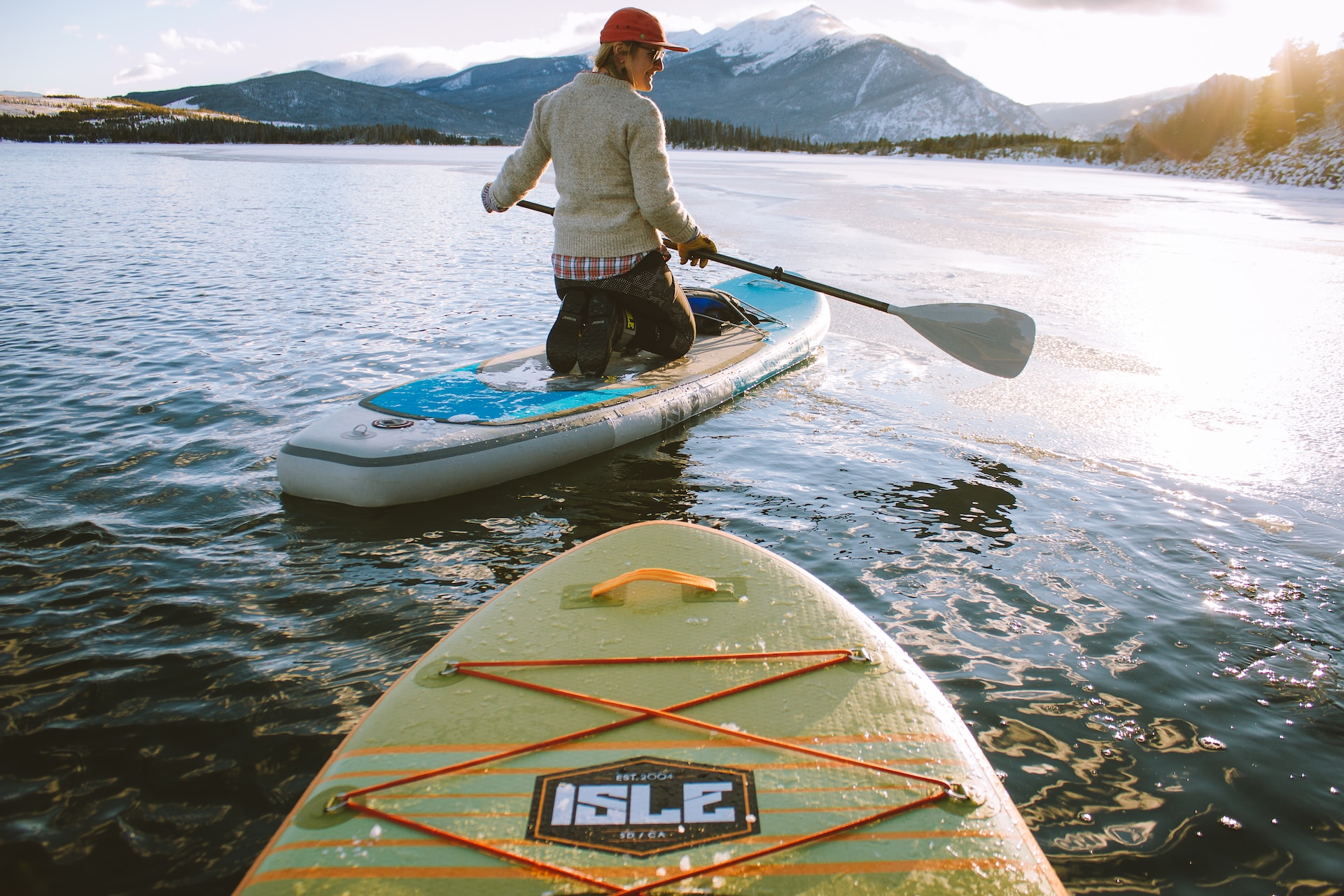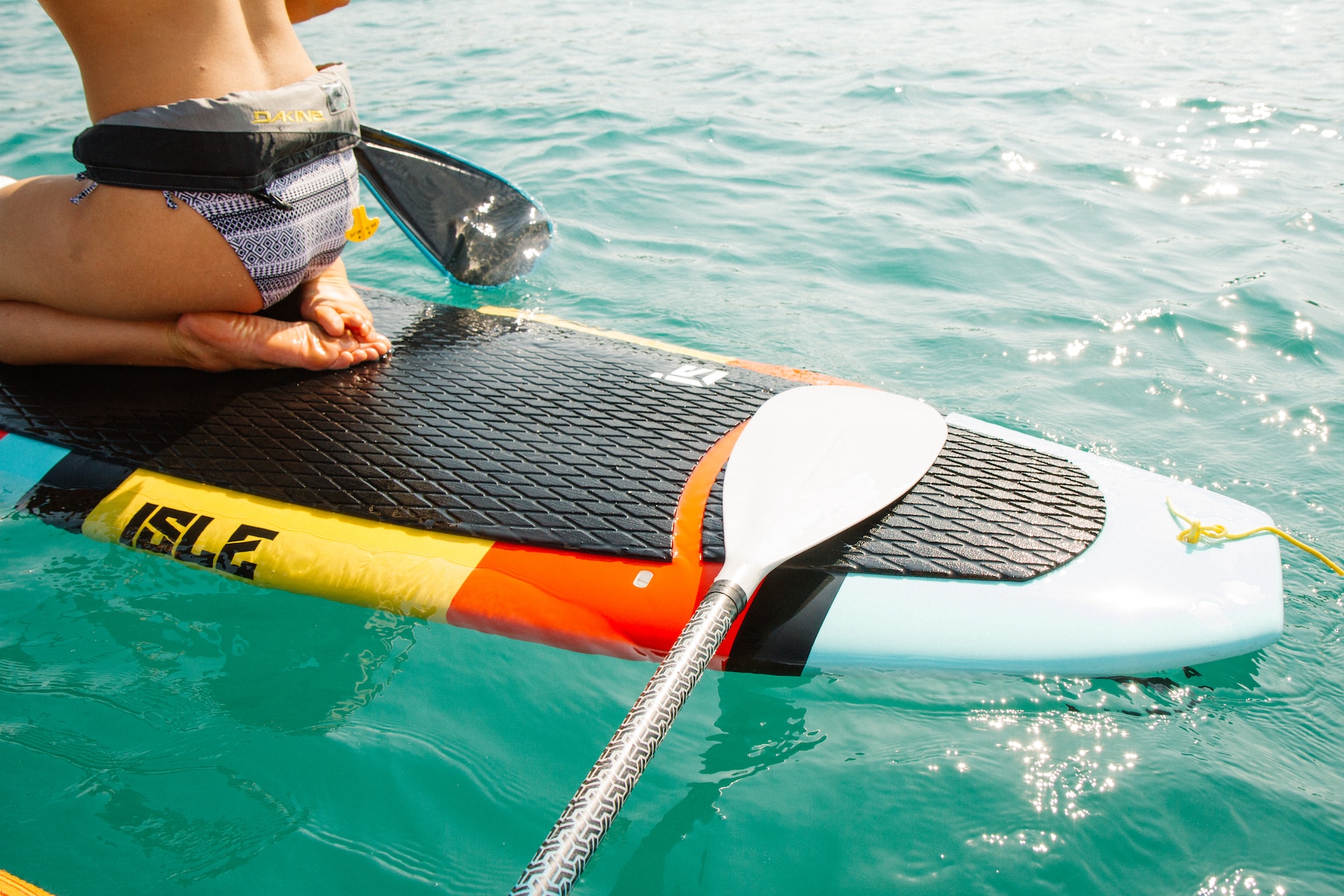Standup paddleboarding (SUP) emerges as a dynamic aquatic activity stemming from surfing, with its contemporary origins deeply intertwined with Hawaii’s vibrant coastal culture. (1) This engaging sport entails participants maintaining an upright stance on buoyant boards, gliding atop the water’s surface while employing a specialized paddle to navigate their way forward. The sport gained significant traction due to its popularity among novice outdoor enthusiasts in the United States. (2)
Standup paddleboarding exhibits a spectrum of adaptations, catering to diverse preferences and skill sets. Tranquil water settings invite enthusiasts to indulge in the serenity of flat-water paddling, while the more competitive spirits delve into exhilarating races. For those seeking an adrenaline surge, there’s whitewater SUP, which involves conquering tumultuous river currents. On the other end of the spectrum lies the harmonious fusion of yoga and SUP, combining balance and mindfulness against the backdrop of serene waters. Even angling aficionados find their niche in this multifaceted activity, as SUP provides an innovative approach to fishing.
Incorporating elements from its surfing origins, standup paddleboarding has evolved into a versatile aquatic pursuit, capturing the hearts of both thrill-seekers and those seeking tranquility amidst the undulating waves. To delve deeper into the world of standup paddleboarding and its various forms, you can learn more about it here.
How To Choose The Perfect Sup Board
Stand up paddleboarding (SUP) caters to a diverse range of preferences and interests. Whether you seek a leisurely glide on a serene lake, the thrill of riding ocean waves, the tranquility of SUP yoga, or the challenge of an intense workout session, there’s something for everyone. However, the pivotal factor in ensuring your enjoyment lies in selecting the appropriate board. This buying guide is designed to walk you through the essential aspects to ponder as you make your board selection.
To discover the stand up paddle board that perfectly aligns with your needs, take heed of the following points:
1. Board Size
Choosing the right board size is an initial and crucial factor to consider when embarking on your paddle board selection journey. The paddler’s body weight often influences this choice, which can dictate the board’s optimal dimensions. As for board length, it typically falls within the range of 10 to 14 feet. Novice paddlers are commonly directed toward boards in the 10-to-11-foot category, known for their increased width to enhance stability. Notably, shorter boards around 9 feet are available, although these are primarily tailored to the specialized realm of paddle board surfing. The advantage of shorter boards lies in their agility and ease of maneuvering, particularly for those interested in navigating more intricate waters. On the other hand, longer boards tend to provide superior stability, albeit requiring more time and effort to execute turns. While certain boards sport a tri-fin configuration, comprising one central fin and two flanking fins beneath it, this setup might be excessive unless you’re deeply devoted to paddle board surfing. Ultimately, the choice between board lengths and fin setups comes down to a careful evaluation of your skill level, intended activities, and preferred water environments.
2. Inflatable Stand Up Paddleboards (SUPs)
This offers a particularly appealing choice, especially for those new to paddling or dealing with constraints related to space and transportation. The buoyancy and thickness of these inflatable boards can instill a sense of confidence in beginner paddlers. Modern advancements, like woven drop stitch construction, have significantly enhanced the rigidity of inflatable SUPs compared to their earlier counterparts. However, the crux lies in opting for a high-quality inflatable board, as inexpensive alternatives can restrict your performance and compromise buoyancy. To ensure a smooth and stable experience that doesn’t resemble bouncing around in an inflatable castle, it’s advisable to select an inflatable SUP boasting 3 to 4 layers of PVC, utilizing woven drop stitch construction, and maintaining a PSI (pounds per square inch) of 25. While they might come at a higher cost, premium boards are often well worth the additional investment.
3. Rounded Nose Boards
Taken back to the roots of stand up paddleboarding, mirroring the classic surfboard shape that characterized the early days of surfing. What set these boards apart was their wider profile compared to traditional surfboards, necessitating the incorporation of a central handle for ease of transportation. In addition, these early stand up paddle (SUP) boards boasted greater length than the average surf longboard, further distinguishing their design. Within this category, Yoga SUP boards find their niche, their purpose aligned with the tranquil nature of yoga practice. When paddling out to join a yoga class, the focus is often on cultivating a sense of serenity, allowing the journey to be as significant as the destination. Some Yoga SUP boards exhibit a modified nose design, enhancing their navigational capabilities when confronted with turbulent waters. The rounded nose board style pays homage to the origins of paddleboarding and offers a practical solution for yoga enthusiasts seeking a harmonious connection between the water and their practice.
4. Rigid Stand Up Paddleboards (SUPs)
These are the go-to choice for paddlers who possess ample storage space and the convenience of a vehicle equipped with a paddleboard roof rack. While inflatable boards are versatile and suitable for various paddle board activities, a subset of enthusiasts, often called purists, gravitates toward a rigid board’s solid and inflexible nature. Moreover, hard boards typically feature an EPS foam core reinforced with fiberglass and resin layers. Some paddle board manufacturers utilize roto molded plastic construction, which imparts additional weight to the board when compared to EPS foam core-based options. It’s worth noting that most epoxy-based boards tend to be relatively delicate, which is why premium boards often incorporate a more robust outer layer, such as a polymer coating, to enhance durability and safeguard the board’s exterior. For paddlers who value tradition and the distinct characteristics of a rigid board, choosing between inflatable and rigid SUPs reflects personal preferences, storage options, and the specific activities they intend to pursue on the water.
5. Race SUP Boards
These are specialized vessels designed for competitive stand up paddleboard racing, characterized by their sleek and narrow profiles. These boards typically boast an even narrower width compared to touring boards. Similar to touring paddle boards, race SUPs feature a pointed nose, which houses a displacement hull (or planing hull), adept at rapidly shedding water as the racer propels forward. Furthermore, race SUP boards are often characterized by their extended length, a factor contributing to their enhanced speed. Race-oriented stand up paddle boards are meticulously equipped to maximize velocity. They are frequently equipped with race fins, and racers wield lightweight carbon fiber paddles to reduce exertion and optimize efficiency.
6. Displacement Hull Paddle Boards
In the touring realm, particularly when embarking on extended journeys across bodies of water. This design is often embraced by Touring SUPs (stand up paddleboards) that are purpose-built for covering substantial distances. Recognizable by their pointed noses, these boards are equipped with displacement hulls, also known as planing hulls, which significantly aid in traversing long stretches of water. Their streamlined form typically includes additional storage space, allowing paddlers to carry essentials like sleeping bags and coolers. When opting for a touring board focused on extended travel, the terrain of choice is usually calm waters. The planing hull configuration is a powerful ally, propelling the board forward efficiently while cutting through any minor disturbances on the water’s surface. The design’s prowess truly shines in flat water conditions, optimizing speed and distance coverage.
Conclusion
To fully relish the experience of Stand Up Paddle Boarding, a solid grasp of its basics is essential. From defining the sport to delving into its nuances, the journey starts with choosing the right board. This guide ensures you’re well-prepared to dive into the thrilling realm of standup paddle boarding. Moreover, Stand Up Paddle Boarding involves standing on a board and using a paddle to navigate. It offers diverse experiences, from tranquil lake paddling to ocean wave riding, yoga, and more. Picking the right board is crucial, factoring in your skills, preferences, and intended activities. By absorbing this guide, you’ll confidently venture into standup paddle boarding, connecting with both nature and adventure as you explore waterways with newfound enthusiasm.

